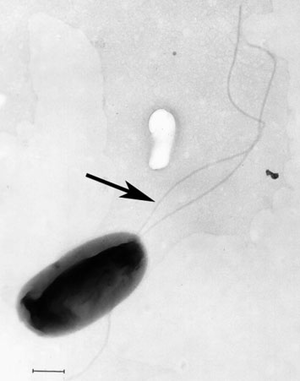Geoalkalibacter subterraneus
Classification
Higher order taxa
Bacteria; Proteobacteria; Deltaproteobacteria; Desulfuromonadales; Geobacteraceae
Species
Geoalkalibacter subterraneus
Description and Significance
Geoalkalibacter subterraneus is a gram-negative motile rod with polar flagella. G. subterraneus does not form spores. cells range in length 1.0-5.0µm, and diameter .5-.6µm.
Genome Structure
Geoalkalibacter subterraneus has one circular chromosome and one plasmid, both have been completely sequenced for strain Red1T[1] The chromosome contains 3.48Mb, 3287 genes and 3202 coding genes. The plasmid contains 242Kb, 258 genes and 256 coding genes.
Cell Structure, Metabolism and Life Cycle
G. subterraneus is strictly anaerobic. It obtains energy by reducing a variety of oxidized species including Fe(III), Mn(IV), nitrate, elemental sulfur and trimethylamine N-oxide. G. subterraneus grows optimally at 40°C and pH 7.
Ecology
References
Author
Page authored by Luke Pryke and Hannah Pak, students of Prof. Jay Lennon at Indiana University.

